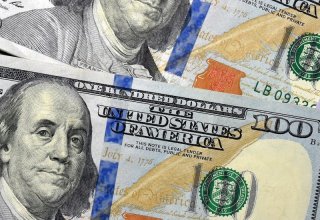$1,400 Stimulus Checks: The Silver Bullet to Save the U.S. Economy?
Several economists have noted that while any lump of money can provide a strong financial ledge for households, more targeted relief toward the hardest-hit sectors of the economy would likely have been more beneficial.
Some Americans have received as much as $3,200 in direct payments from the federal government since the onset of the coronavirus pandemic.
The benefits were featured in the three big-spending measures that Congress hammered out within the last year, in efforts to mitigate the financial turmoil triggered by the pandemic that’s left millions of people unemployed, small businesses closed and renters forced to face eviction.
Americans received $1,200 and $600 payments last spring and in January, with amounts based on income levels, and the most recent round of direct payments will be as much as $1,400 for individuals earning $75,000 per year and couples earning $150,000. This provision of President Joe Biden’s $1.9 trillion rescue package totaled roughly $400 billion, which is the most expensive portion of the bill.
But the question that still looms is whether the stimulus checks will actually help the economy swiftly recover after being in a financial rut for more than a year.
Several economists have noted that while any lump of money can provide a strong financial ledge for households, more targeted relief toward the hardest-hit sectors of the economy would likely have been more beneficial.
“Those Americans most in need of financial support are the 42 percent of households that Bankrate has found are earning less now than prior to the pandemic,” Greg McBride, the chief financial analyst at Bankrate, said. “Extended unemployment benefits, payment relief and moratoriums on evictions and foreclosures are a big help but many of these households need more than a one-time $1,400 payment—they need help this month, next month, and beyond.”
A Bankrate survey from December found that half of U.S. households suffered income losses amid the outbreak. And even after a slight rebound when more federal aid was pumped into the economy, 42 percent said they still haven’t recovered, while only 17 percent said income levels have returned to normal.
McBride added, “A more targeted effort to aid those households that have seen income disruption would have been most effective, but that doesn’t mean that the money sent to households that are paying down debt or boosting savings has been wasted. Those financial moves will facilitate a more sustained level of spending and economic growth in the future. For example, the money someone adds to savings today could be the downpayment on a home or car next year, or the seed capital to start a business.”
A Federal Reserve survey released in October discovered that about 29 percent of respondents spent their initial stimulus check, while more than 36 percent saved it and roughly 35 percent used it to pay down debt.
Another report from the National Bureau of Economic Research indicated that 42 percent of households spent the first stimulus checks authorized from the Cares Act, while 27 percent was saved and 31 percent was used for debt payments.
If Americans decide to save the third round of stimulus checks, that could set the groundwork for a slower path toward economic recovery. Economists have speculated that people may not be spending since a slew of businesses closed and travel options are limited due to virus-related restrictions, or the large sum of money from the government could have offered Americans an incentive to actually save it, rather than spend it.
But regardless, economists noted that although the checks might be saved now, those same funds could likely be used for a larger, more long-term investment in the future.
“The $1,400 payments to household[s] will certainly provide substantial help for the millions of people still suffering from unemployment, under-employment, risk of eviction and other negative economic consequences from the COVID-induced recession,” Ryan Chahrour, an associate professor of economics at Boston College, said. “To the extent that the payments are about providing relief, the fact that many people will likely save their check is not a problem. A saved check often means paying down credit-card or other household debt or otherwise strengthening the financial position of individual households, which helps their long-term economic prospects.”
Chahrour also noted, however, it’ll be important to “watch if the checks that are spent immediately contribute to a temporary overheating in some sectors of the economy. Unlike a typical recession, where the shortfall is normally associated with a lack of demand for goods and services by households, the recovery here now appears to be largely ‘baked-in,’ and some sectors may actually struggle to meet the coming surge of demand for their goods.”
Once the economy returns back to “normal” and consumer spending surges, “we may find the economy overshoots in the initial phases of the recovery, a risk that could have been mitigated by focusing more resources on unemployment and other benefits that are tied directly to developments in the economy,” according to Charour.
And Biden’s relief package falls short of doing so, as roughly $250 billion has been allocated for extended unemployment programs, $50 billion for small businesses and just $30 billion for emergency rental assistance, amounts that are significantly less than what’s been set aside for stimulus checks.
“The term ‘stimulus’ is a bit of a misnomer. The economy is still in recovery mode and until things are open, vaccinations are widespread, and people are comfortable going out in public, there will be a limit to how much consumer spending households are willing or able to do,” McBride said.
Rachel Bucchino is a reporter at the National Interest. Her work has appeared in The Washington Post, U.S. News & World Report and The Hill.
Image: Reuters

